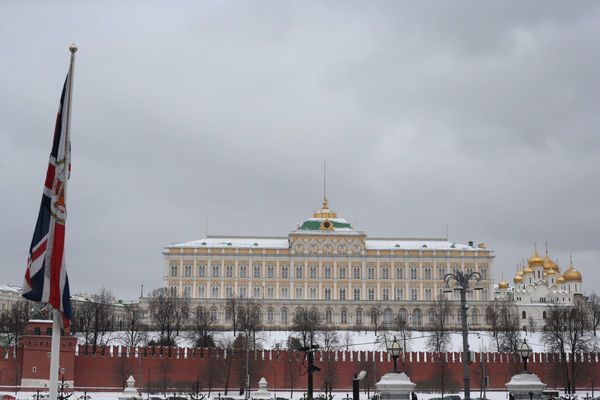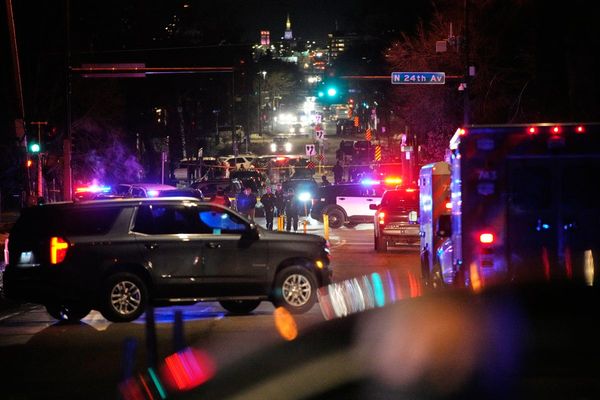
In early May, a 29-year-old man visited several bars and nightclubs in the South Korean capital of Seoul and soon after tested positive for COVID-19, the disease caused by the novel coronavirus. South Korean health authorities promptly launched an enormous contact-tracing effort, tested 83,000 people, and identified and isolated nearly 250 newly infected cases. Their swift action prevented this “superspreading” event from reigniting a much wider outbreak. As of early June, there has not been a major uptick in cases in South Korea—new infections remain under 50 per day—and the country is carefully but safely returning to a semblance of normalcy.
South Korea and the United States both confirmed their first COVID-19 cases on January 20. But the two countries’ outbreaks have since diverged radically. The United States continues to record roughly 20,000 new cases per day. Five months into the pandemic, the United States has achieved the largest case count and death toll (now well over 100,000 deaths) in the world. The crisis has brought large sectors of the economy to a standstill and forced 40 million workers to file for unemployment. The disease is moving rapidly into rural areas, ravaging meatpacking plants and long-term care facilities. Most U.S. states have nowhere near the testing and contact-tracing capacity exhibited by South Korea but are nevertheless relaxing their containment measures.
How has the world’s richest country, home to world-class health institutions such as the Centers for Disease Control and Prevention and the National Institutes of Health, produced one of the worst coronavirus outbreaks in the world? Why is the United States, accustomed to seeing itself as the leader of the developed world, lagging so badly behind its peers? South Korea isn’t alone in faring better than the United States. Germany, Japan, and Norway have all had more success containing the virus and sustained less economic damage. New Zealand’s early and disciplined lockdown has driven new cases down close to zero, and the country is reopening its economy safely. Even hard-hit countries, such as Italy and Spain, have gotten their outbreaks under control more quickly than the United States.
The catastrophic U.S. response to COVID-19 is not primarily the result of scientific or medical deficiencies. Rather, it is the product of an insularity in U.S. politics and culture. American exceptionalism—the notion that the United States is unique among nations and that the American way is invariably the best—has blinded the country’s leaders (and many of its citizens) to potentially lifesaving lessons from other countries. The dark side of American exceptionalism is “hubris and closed-mindedness, and . . . ignorance about the rest of the world,” the eminent American historian Eric Foner has argued. “Since the United States is so exceptional, there is no point in learning about other societies.” That mentality is now costing American lives.
American exceptionalism finds its most recent and fervent expression in President Donald Trump’s “America first” rhetoric and policies. But the belief in exceptionalism isn’t confined to the White House. It is hardwired into American politics and society, and it explains many of the United States’ failures in combating COVID-19. Congress, many states, and the private sector all disregarded lessons from countries that had faced the coronavirus earlier. American officials are now offering the public a brutal choice—between preventing more deaths or reopening the economy—that few other countries have foisted on their people. U.S. leaders could have borrowed lessons from the successes of other nations. Ignoring them has yielded only staggering levels of sickness, death, and economic devastation.
ALARM BELLS
As the virus spread earlier this year in China, South Korea, and then Italy, much of the United States indulged in magical thinking. Few institutions—public or private—prepared for the possibility that COVID-19 might affect the United States as catastrophically as it had other countries. The president and senior U.S. officials spent January and February repeating the mantra that the disease posed only a low risk in the United States. Rather than urgently shore up preparations for the virus, the administration stood by, confident in its travel bans and studies suggesting that the United States was the best-equipped country in the world to contain epidemics. The president insisted in late February that “whatever happens, we’re totally prepared” and that “we’re rated number one.” Meanwhile, neither the government nor U.S. hospitals worked to build up stocks of crucial personal protective equipment (PPE) or to ready medical staffs and facilities for potential surges in cases. As the disease shut down China’s economy, the U.S. private sector didn’t price in the possibility that the crisis could do the same to the United States.
There was no sound reason to think that a virus capable of overwhelming the health systems of China and Italy would prove any less dangerous in the United States. Wuhan, the outbreak’s original epicenter, is a major metropolis with a modern health-care system and sophisticated public health capacities. Northern Italy has more doctors and hospital beds per capita than the United States and a stronger public health system. Many public health experts (including me) sought to raise the alarm in February but were largely ignored. When Scott Gottlieb, Trump’s former commissioner of the Food and Drug Administration, delivered an urgent warning to Republicans in Congress in early March, many legislators dismissed him as unduly alarmist.
It is likely that earlier and more explicit warnings from the federal government would have helped awaken U.S. society to the threat of the virus. But it is still incredible that so many leaders and institutions ignored the reality of the coming outbreak. U.S. corporations span the globe; the U.S. stock market is intimately linked with the world at large; New York City is a deeply interconnected, international hub. But leaders across American society imagined that somehow the United States would be spared the ravages of the disease.
An outbreak of some magnitude in the United States was inevitable, but the country’s leaders did not reckon with that inevitability. The official reluctance to spend February preparing for the virus was a deliberate and catastrophic choice—one that stemmed from incompetence but also from irrational confidence in the United States’ capabilities compared with other nations. And the failure to consider how other countries had either struggled or succeeded in grappling with the disease would set the stage for what followed.
THE PANDEMIC ARRIVES
Health officials uncovered local transmission of COVID-19 in northern California on February 26. Within days, the spread of the disease was also detected in Oregon and Washington. By March 7, the United States was generating over 100 new cases per day; just nine days later, new cases began exceeding 1,000 per day. Countries that had experienced earlier waves of COVID-19 had shown how to slow and contain the disease. China had brought its official daily case count below 100 by March 6 (just as the United States passed that threshold in the opposite direction). China’s use of lockdowns, testing, contact tracing, and isolation had prevented major outbreaks outside of Wuhan, and by mid-March, even Wuhan’s hospitals were no longer overwhelmed. Some skepticism about China’s official numbers is warranted, but China’s strategy undoubtedly brought a raging outbreak to heel.
Other countries had success with similar tactics. The early waves of transmission provided blueprints for slowing and containing the virus: aggressive initial distancing to slow the explosive spread of the disease, followed by a transition to a long-term suppression strategy centered around testing, contact tracing, and targeted quarantine. After South Korea peaked at over 500 new cases per day in late February, its infection rate went into a steep decline in early March. Hong Kong, Singapore, Taiwan, and Vietnam were all beginning to successfully contain the virus by that time. Japan, too, had avoided a major outbreak by mid-March (although it later experienced large flare-ups after relaxing distancing measures too quickly). U.S. officials and leaders could have proactively incorporated these lessons into their own preparations—reinforcing hospitals, preparing for social distancing, and aggressively ramping up early testing and surveillance.
Instead, U.S. authorities dithered. By early March, the high costs of delay were abundantly clear. Countries that had swiftly applied physical-distancing measures and scaled up widespread testing and contact tracing had mostly fended off the worst of the disease. Countries that were slow to detect and act upon the threat were hit the worst during the early phase. Still, the federal government continued to downplay the threat well into March and did not even release policy guidance on distancing until March 16, weeks after the first detection of the spread of the virus within American communities.
According to researchers at Columbia University, imposing social-distancing policies across the United States just one to two weeks earlier—acting proactively rather that reactively—would have saved tens of thousands of lives. The lack of decisive and clear direction from the federal government in turn left states and cities making wildly different decisions—with deadly consequences. Early-hit communities on the West Coast took anticipatory measures to prevent a major outbreak, but most other states did not. San Francisco and Seattle began putting measures in place in late February that helped avoid significant rates of transmission; New York City moved more slowly and invited a cataclysm of over 21,000 COVID-19-related deaths.

Most countries mounted robust, centrally led responses to the crisis guided by scientific advice. The United States did not. Instead of mobilizing the unified buying power of the federal government to scale up supplies more rapidly, the White House delegated decisions on testing to the states and left them at the mercy of the private market. The resulting competition between states has failed to deliver testing capacity anywhere near what the country requires. Although the United States is now running more daily tests than any other country, it has only recently caught up to peer countries in terms of per capita testing, and it remains near the bottom of that pack when it comes to the more important metric of tests per new case (which provides a better measure of the thoroughness of testing). Vietnam’s testing strategy reportedly generated an astounding 791 tests per confirmed case; the United States is still languishing in the low twenties.
The story is similar when it comes to procuring PPE—crucial for protecting frontline health workers and avoiding outbreaks in nursing homes. While other countries have put their national governments in charge of PPE procurement, the United States has created a Lord of the Flies-esque competition among the states. When the federal government has supplemented state procurement—notably through “Project Airbridge,” led by the president’s son-in-law Jared Kushner—it has delivered comparatively little. By early May, federal efforts had acquired just 85 million N95 medical masks, for instance (and fewer than one million through Kushner’s project). France, which centralized procurement of supplies through the national government, acquired 400 million N95 masks for a population one-fifth the size.
Federal support has also been woefully insufficient when it comes to contact tracing, which, alongside testing, is central to safely reopening the economy. China deployed 9,000 contact tracers to contain the outbreak among Wuhan’s 11 million people. South Korea, as mentioned above, was able to identify hundreds of new cases that had spread from a cluster of Seoul nightclubs in a matter of days. In the United States, many communities could not maintain contact tracing once they had surpassed a handful of cases, because their public health departments lacked the sufficient bandwidth and the federal government did not provide enough support. Some states and cities are now attempting to build up armies of contact tracers on their own; but without a clear federal framework, they have had to turn haphazardly to private and nonprofit partners for help. New York City aims to hire 2,500 new employees as tracers; the state of Michigan instead plans to rely largely on volunteers.
These tasks are now straining already stretched state and local health budgets. The lack of federal leadership on tracing has meant that legislators shortchanged states and localities in the stimulus bills that passed in recent months, and the United States continues to make slow and halting progress. The governor of Maryland recently boasted that his state would soon have the ability to trace 10,000 contacts per day. That may be impressive, but the World Health Organization and the Congolese government were tracing 25,000 contacts per day during the peak of the Ebola outbreak in the Democratic Republic of Congo in 2019. And they were doing so in a war zone. Maryland’s state budget of $41.2 billion is four times the size of Congo’s national budget.
BAD OMENS
As exceptionalism continues to shape the U.S. response to the pandemic, the number of new coronavirus cases in the country has remained high while the numbers in peer countries have declined precipitously. The two worst-hit European countries, Italy and Spain, experienced high peaks in their new case counts (higher than that of the United States on a per capita basis). Yet neither country’s case curve plateaued for as long as the United States’ curve has. By the 85th day of each country’s outbreak (roughly May 25 for the United States, as calculated by the Financial Times) Italy had shown an 84 percent decline from its peak of new daily cases. Spain’s new case levels had declined by 94 percent. But in the United States, new daily cases had declined only 31 percent over the equivalent time period.
That comparative failure to contain the outbreak has produced another situation unique to the United States: a widespread perception that the country must now choose between defeating the virus and rehabilitating the economy. Apart from Sweden, which has intentionally (and damagingly) pursued a strategy of allowing the virus to spread largely unimpeded through low-risk populations in hopes of attaining herd immunity, no wealthy country has tried to reinvigorate its economy without first suppressing the outbreak. Strong social safety nets and government-financed employment support in other countries have better blunted the economic pain of lockdowns, helping minimize the kinds of mass layoffs and reopening protests seen in the United States. Those countries could then emerge from lockdown more cautiously and judiciously, ensuring that the virus had been contained to a manageable level before relaxing restrictions. They have simultaneously scaled up other public health measures to suppress the transmission of the virus once lockdowns are lifted.
The United States now faces the worst of both worlds. Lax adherence to stay-at-home orders and social distancing—potentially exacerbated by the protests that have understandably followed the police killing of George Floyd in Minneapolis—and inadequate testing have left the United States with a higher baseline level of ongoing transmission than its peer countries. The failure to procure more protective equipment and adequately ramp up testing and tracing capacity has left much of the country unable to suppress transmission after local lockdowns are eased. As a result, Trump and many governors are now framing the policy choice at hand as a decision between containing the virus or preserving the economy. The president has urged the American people to be “warriors” and risk contracting the disease in order to get back to work.
The president has urged the American people to be “warriors” and risk contracting the disease in order to get back to work.
This is a false choice. It is hard to foresee an adequate economic recovery as long as close to 1,000 Americans are dying every day from the outbreak and vulnerable groups (the immunosuppressed and the elderly, for example) remain unable to safely participate in society. But more to the point: other countries are not accepting this tradeoff between health and prosperity, and there is no reason the United States should either. A different strategy, one more in line with the lessons from around the world, would have enabled both the suppression of the virus and a more rapid economic recovery. The persistent refusal of U.S. leadership—and society at large—to learn from the rest of the world leaves the country in this predicament.
That bodes ill for the future. As the U.S. outbreak has spread, the White House has reacted not by building bridges with international partners but by setting those bridges on fire. The administration has escalated counterproductive fights with China, pledged to withdraw from the World Health Organization, barred aid organizations from purchasing PPE for the developing world, declined to participate in cooperative international efforts to develop a vaccine, and competed with allied nations for supplies of PPE and testing materials.
This pandemic is not a crisis that the United States can solve on its own. The country must begin to adopt practices that are proving successful elsewhere in the world. It must partner with other nations to tackle shortages of PPE and testing supplies. It must collaborate on vaccine development and begin laying the groundwork for sharing those vaccines in the future. And U.S. officials must expedite support to the developing world, recognizing that even if they succeed in containing the virus at home, the country will not be truly safe as long as fires are burning elsewhere.
All of these steps are essential to protecting Americans, and all of them require a kind of globally engaged U.S. response to the pandemic that Trump seems incapable of delivering. If the United States cannot adapt its approach to reflect lessons learned from around the world, it risks an indefinite limbo of intolerable mortality levels and sustained economic stagnation. Breaking out of that limbo will entail first breaking out of the insular mentality that sees the United States as exceptional and holds it apart from the rest of the world.







